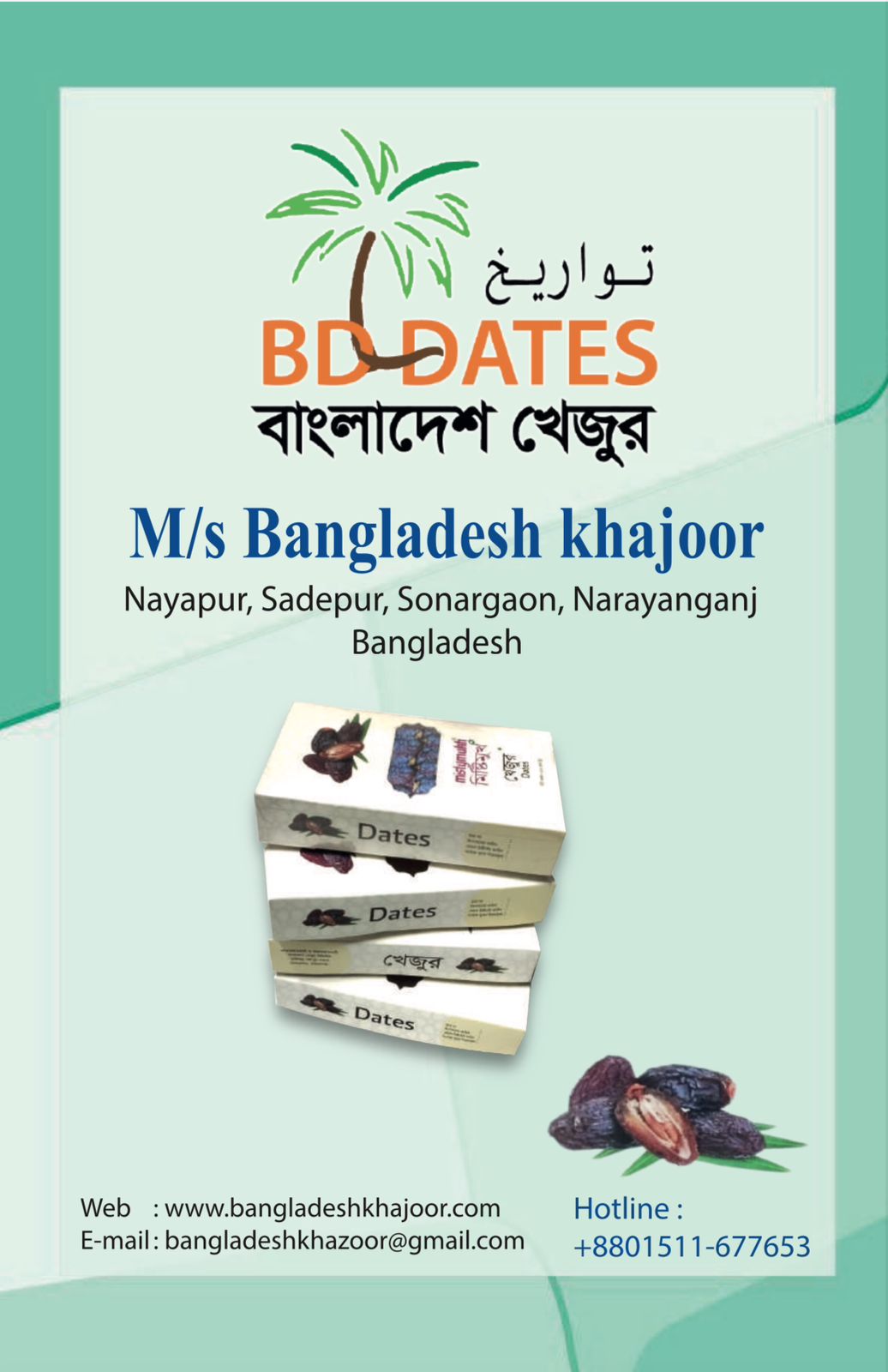Bats of Bangladesh
Bats of Bangladesh
-The Flying Mammals of the Dark
Prof. (Dr.) A N M Aminoor Rahman
Head of the Dept. of Gynecology,
Obstetrics, & Reproductive Health
Director (Outreach Center)
Former Dean, Faculty of Veterinary
Medicine & Animal Science, BSMRAU, Gazipur-1706
E.mail. aminoor69@yahoo.com
Mammals, are the most intelligent vertebrates, which have well-adapted over the last millennia, distributing over and very successfully inhabiting almost all the habitats of the world, ranging from the Arctic to the Antarctic region. This highly developed chordate have traversed the land, water and sky, inhabiting anywhere of these biomes from the trees to the ocean. Their morphological evolution has allowed them to adopt various methods of locomotion, from flying to swimming and to become arboreal or fossorial, inhabiting the land, fresh water, or marine habitats.
All mammals possess four unique characteristics, like – i. The presence of mammary glands – functional in suckling females but non-functional in others (vestigial in males); ii. The presence of a neo-cortex (a part of brain); iii. The presence of hair all over the body; and iv. The presence of a Pinna (outer part of ear) and three Ossicles in the middle ear (Malleus, Incas, and Stapes). Besides, a few other unique characteristics are found in some mammals but not all. They are warm blooded or endothermic animals (except naked Mole Rat). Their five Species are oviparous (egg-laying, Monotremes), but others are viviparous (give birth to babies) and have a placenta for feeding and growing of the fetus during gestation.
Among the mammals, bats are the only group capable of true flight. With extremely elongated fingers and a wing membrane stretched between, the bat’s wing anatomically resembles the human hand. Out of 5,676 living mammalian Species worldwide bats represent about 22%, with about 1,240 Species. In Bangladesh, out of 129 Species of mammals bats represent 27.9%, with about 36 Species. They are also among the only mammals known to feed on blood. Common misconceptions and fears about bats have led many people to regard them as the creatures of dark and unclean disease carriers. Therefore, bats are always hated and neglected in many countries including Bangladesh. The myths those are known to many countries including our motherland about bats are mostly exaggerated. But they are actually very helpful and performing the vital ecological roles of pollinating flowers and dispersing fruit seeds; many tropical plant Species depend entirely on bats for the distribution of their seeds. They are also controlling the population of crop-destroying insects.
Bats are mammals of the order Chiroptera. The word Chiroptera derived from the ancient Greek word cheir means “hand” and pteron means “wing”, which means their forelimbs form webbed wings, making them the only mammals, naturally capable of true and sustained flight. In contrast, some other mammals can also occasionally fly, like the gliding of Opossums for a short distance. Bats do not flap their entire forelimb like birds, instead they flap their spread-out digits, which are very long and covered with a thin membrane, Patagium. The Chiroptera is divided into two sub-orders: 1) Macro-chiroptera, popularly known as Megabats, which are less specialized and largely fruit-eating, commonly known as flying fox, and 2) Micro-chiroptera, popularly known as Microbats, which are highly specialized and echo-locating bats. Megabats tend to be larger than microbats, but some microbats are actually larger than some megabats. About 70% of bat Species are insectivores and most of the rest are frugivores (fruit eaters). A few Species, such as the fish-eating bat, feed from animals other than insects, along with Vampire bats, which are haemato-phagous (feeding on blood).
The largest Species of bat is the Giant Golden-crowned Flying Fox with a weight up to 1.6 kilogram (kg) and wingspan up to 1.7 meter (m). The smallest bat in the world is the Kitti’s Hog-nosed bat which is only 30-40 millimeter (mm) long, 15 mm wingspan and weight is only 2.0-2.6 gram (g). It is also the smallest mammals of the world with the Etruscan Shrew being the other contender. Out of 35 known Species of bats in Bangladesh, Flying Fox (Pteropus giganteus) is the largest which is 23-25 centimeter (cm) long. Its wingspan is 1.2-1.5 m and weight is 0.6-1.6 kg. On the other hand, Least Leaf-nosed Bat (Hipposideros cineraceous) is the smallest bat as well as mammals of Bangladesh which is only 3.7 cm long.
Bats live all over the globe, with the exception of extremely cold regions. They mostly prefer warmer areas that are closer to the equator, and can be found in rain forests, mountains, farmland, woods, and cities. Bats have two strategies for weathering the cold. Some migrate to warmer areas, while others go into torpor. In this short-term form of hibernation, a bat reduces its metabolic rate, lowers its body temperature, and slows its breathing and heart rate. Except their ecological roles bats are economically important, as they consume insect pests, reducing the need for pesticides. They live in crevices, tree hollows, furrows in rocks and walls, caves, abandoned buildings, under the bridges and road culverts, large trees and old wells. Under each roosting place there are usually be a pile of droppings that stink. The same roost is used for ages’ unless disturbed. Bats live together in groups called colonies, which contain 100-1,000 or more bats. They are also nocturnal, meaning that they sleep during the day and are awake at night. Some may fly up to 50 kilometers (km) to find food during their nightly journeys. In the day, they sleep upside down from trees or the roofs of caves, holding on with their sharp claws.
Bats have a keen sense of smell and sound. All fruit bats except the Egyptian Fruit Bat use the sense of smell and vision for locating food and shelter while all the insect bats and the Egyptian Fruit Bat use echolocation. The nose of many Species has become modified and works as a sensory organ. Echolocation is a remarkable phenomenon in the animal world. Insect bats have a perfect mechanism of echolocation. The insect bats produce high frequency, supersonic sound waves through the mouth or the nostrils. The Egyptian Fruit Bat produces the sound with the help of the tongue. These sound waves hit objects such as the prey or obstacles and will rebound as echoes that are picked up by the bat ears. Insect bats have an acute sense of hearing.
Most bats eat flowers, fruits, nectar, pollen, leaves, and different types of small insects, though it depends on the type of bat. Megabats usually eat fruits, and microbats generally eat insects. The Malayan Flying Fox has a big appetite. It can eat half its body weight every day. The Vampire Bat outdoes even that, though, eating twice its weight in one day. The Brown Bat can eat up to 1,000 small insects in an hour. Some bats will squeeze fruits in their mouths and drink the juices. Vampire Bats like a juice of a different type, though. They do indeed drink blood, mainly from cattle and deer, but they don’t suck blood, like the legends say. Rather, they make a V-shaped cut and then lick up the blood.
Bats have some unique mating behaviors not seen in other animals. Male and female bats meet in hibernation sites, called hibernacula, where they breed. Bats ‘swarm’ around in huge numbers, chasing each other and performing spectacular aerobatics. It’s not clear how the bats choose their mates, but it may be that females seek out the most agile males. During the swarming event, breeding pairs go off to secluded spots in the cave to mate in private. A pregnant female carry her offspring for a gestation period of 40 days to 6 months. Then, she gives birth to one offspring, called a pup. The pup usually weigh about one-fourth as much as its mother at birth. Soon after birth the offspring crawls up the mother’s body till it reaches one of the two pectoral nipples; it hold on to the nipple till the time of weaning. All baby teeth are of the same size and used just for getting a good grip on to a teat. Young bats drink milk from their mothers to survive, much like other mammals. The mothers and pups stay in groups, separate from the males. The other mothers help take care of the pup until it is old enough to care for itself.
The classification or taxonomy of bats, according to the Integrated Taxonomic Information System (ITIS), is therefore:
- Kingdom: Animalia
- Phylum: Chordata
- Subphylum: Vertebrata
- Class: Mammalia
- Order: Chiroptera
- Suborder: Macrochiroptera, Microchiroptera
- Family: There are 16 families in the suborder Microchiroptera, and only one in Macrochiroptera: Pteropodidae, which includes flying foxes and Old World fruit bats.
- Genera: There are 187 genera of bats.
- Species: There are more than 950, and perhaps as many as 1,240 Species of bats.
Bats constitute the largest mammalian community in Bangladesh; however, till today little population data on fruit bats is available while data on population of other insectivorous bats is very scanty. Some of the bat Species found in Bangladesh is described below:
- Flying Fox (Pteropus giganteus, Family: Pteropodidae):
Also known as Indian Flying Fox, Indian Fruit Bat or Greater Indian Fruit Bat. Bangla name is Boro Badur, Badur, or Chompa Badur. Body length 23-25 cm, has no tail, wingspan 0.6-1.6 m and weight 1.2-1.5 kg. This is the biggest and most conspicuous of all bats found in the country. Head is deep chestnut-brown, neck and back are chestnut-brown, and belly is dark yellow-brown. Wings are huge and black with a long claw in the first digit of forearm. Feet are large with claws in all five digits. Long ears are black. Flying Foxes are nocturnal and crepuscular and live in colonies of hundreds or thousands of individuals. Diet consists of fruit juices like litchi, mango, guava, fig etc. They mainly roost in large trees such as banyan, fig, tamarind etc. Breeds year round; mating occurs from July to October and births take place from February to May. They are polygynandrous that is female mate with different males. After 140-150 days of gestation female gives birth to 1-2 offspring. Young become mature after 1.5 years. Lifespan is up to 31 years in captivity. Flying fox is very common and is widely distributed throughout the country in all types of habitat.
- Fulvous Fruit Bat (Rousettus leschenaultia, Family: Pteropodidae):
Also known as Leschenault’s rousette. Bangla name is Kolabadur or Tamatey Kolabadur. Length 10-11 cm and weight 60-100 g. Newborn weigh only 12 g. Fur on the upper part of the body is fulvous-brown and in the under part is gray or grayish-brown. Long hairs are seen on chin and neck. Rest of the body fur is short and sparse. They are nocturnal and lives in colonies of 2-3 thousands or more individuals. Diet includes different types of fruits including banana. Day time roosts include caves, deserted buildings, disused tunnels etc. Information on breeding is scanty, but may breed 1-2 times a year. Young weaned in 35-40 days. Female and male may attain sexual maturity in five and fifteen months, respectively. Lifespan is not known. They are common and distributed almost throughout the country including the Sundarbans.
- Short-nosed Fruit Bat (Cynopterus sphinx, Family: Pteropodidae):
Also known as Greater Short-nosed Fruit Bat. Bangla name is Boncha Kola Badur, Boro Boncha Kola Badur, Boncha Nak Kola Badur or Boro Boncha Nak Kola Badur. Body length 10 cm, wingspan 48 cm and weigh only 63.5 g. Newborn is 13.5 g with a wingspan of 24 cm. This medium-sized bat has a relatively long snout. Fur is very fine and silky. Upper part of the body is bright orange or brown to grey-brown with paler under part. Juveniles are lighter than adults. They are nocturnal and crepuscular. Diurnal roosts include tents made by males with leaves and stems, the underside of palm leaves, the crevices of banyan, peepul, palm or coconut tree etc. Their diet includes fruits mainly banana, guava and mahua; but also eat flowers and leaves. They live in agricultural lands to forested regions, grasslands, or mangroves. They breeds twice a year; mainly during February to March and August to September. After 3-5 months of gestation, female give births to a single offspring. Female become sexually matures in 5-6 months and male in a year. Lifespan is up to ten years in captivity. They are common and widely distributed throughout the country in diverse habitat.
- Lesser Mouse-tailed Bat (Rhinopoma hardwickii, Rhinopomatidae):
Also known as Hardwicke’s Lesser Mouse-tailed Bat, Lesser Rat-tailed Bat or Long-tailed Bat. Bangla name is Choto Indurleji Chamchika or Choto Indur Leja Badur. This is a small bat with a very long, mouse-like tail. Body length is 6.2-7.1 cm, tail 5.7-7.0 cm and weight 6-14 g. The fur is usually brown-gray, tending towards darker brown on the back and lighter grey on the underside. Face is furless with black eyes and a flat, thin snout. Ears are large in proportion to the head. The long, thin tail is only partially enclosed within a flap of skin, known as the tail membrane. These nocturnal and crepuscular bats roosts both in small (4-10) and large (up to 500) groups and eats mainly insects, especially beetles, moths etc. They live in hot and dry climate. Roosting sites include dry scrub, rocky areas, caves, abandoned buildings, wells etc. Breeds between February to April and after 95-100 days of gestation female give births to one offspring. Lactation last for 20 days and young can fly in 5-6 weeks. Male and female become mature, respectively, in 16-17 and 8.5-9.0 months of age. This rare Species is known to be found in Chattogram hill tracts and Khulna division including the Sunderbans. However, IUCN Bangladesh (2015) considered this as a Data Deficient Species.
- Long-winged Tomb Bat (Taphozous longimanus, Emballonuridae):
Also known as Seath-tailed Bat. Bangla name is Lomba Dana Minar Chamchika or Thole Chamchika. Body length 7-9 cm, tail 2-3 cm and wingspan 40 cm. Female is larger than male. Fur is short, dense, and soft. Upper part is reddish-brown and under part is paler. Females are darker and juveniles are gray. Wings are narrow and dark brown. Males have well developed gular sacs. Ears stand straight. The Species is nocturnal and crepuscular. Except breeding season, male and female live in different unisexual colonies from 1-20 individuals together. Colonies of females are usually bigger. Diet is mainly insects, especially termites, cockroaches, beetles etc. Can live in different types of habitats and diurnal roosts includes caves, old buildings, wells, hollows in banyan and peepul trees etc. Female give births twice a year. Young are weaned after 4 weeks and become fully mature in 2 months. Previously the Species was only known to occur in St. Martin’s Island. However, IUCN Bangladesh (2015) considered this as a Data Deficient Species.
- Greater False Vampire Bat (Megaderma lyra, Megadermatidae):
Also known as Indian False Vampire Bat or False Vampire Bat. Bangla name is Bhuyo Daini Badur, Daini Badur or Daini Chamchika. Body length 6.5-9.5 cm and weight 40-60 g. Upper part is dark slaty-gray and under part is whitish. Broad wings have grayish-black membranes. Large, elongated, and grayish black ears joined two-third of their length. Snout is naked with two oval-shaped nose-leaf. No tail. They are nocturnal and crepuscular. Colony size varies from a single individual to several hundreds. Diet includes insects, moths, frogs, rodents, small birds etc. Diurnal roosts include deserted houses, old buildings, caves, temples, forts, caves etc. Mating takes place between November and January. After 150-160 days of gestation females give birth to one or sometimes two pups from April to June. Males reach sexual maturity by 15 and female by 19 months of age. Lifespan is 5-20 years. They are common, widely distributed throughout the country and presumably has a large population.
- Lesser False Vampire Bat (Megaderma spasma, Megadermatidae):
Also known as Lesser False Vampire or Common Asian Ghost Bat. Bangla name is Choto Bhuyo Daini Badur, Daini Badur or Daini Chamchika. Body length is 3.9 cm, wingspan is 30.0 cm and weight is 34 g. The fur is bluish-gray along the back and brownish-gray along the underside. Ears are rounded, which are joined at the base. The short tail does not extend outside the membrane. They are nocturnal and crepuscular. Usually found in wet areas. At day time they roost in groups of 3-30 individuals in hollow trees, caves, old buildings, any other large, sheltered structure etc. Although, they are insectivorous; but can eat lizards, small reptiles, small rodents etc. Mating season is from November to January. After 150-160 days of gestation usually one, rarely two offspring are born between April and June. This rare bat Species is recorded from forested areas of Khulna division including the Sunderbans. However, IUCN Bangladesh (2015) considered this as a Data Deficient Species.
- Intermediate Leaf-nosed Bat (Hipposideros larvatus, Hipposideridae):
Also known as Intermediate Round-leaf Bat or Horsefield’s Leaf-nosed Bat that belongs to family. Bangla name is Majhari Pata Nak Chamchika. Body length 7.5 cm, tail 4.3 cm and weight 17.4-24.8 g. The diagnostic feature of this Species is the three lateral accessory leaflets on each side of the nose-leaf. Fur colour is dark gray-brown or reddish-brown, and the ears and nose-leaf are dark gray or brown. Ears are broad and roughly triangular in shape. They are nocturnal and crepuscular. Colony may contain several hundred bats, often shares their roosts with other bat Species. Mainly eat beetles, but can also take moths, butterflies, flies, mosquitoes, termites and other insects. Diurnal roosting place includes caves, abandoned mines, rock crevices, culverts, old buildings etc. Nothing is known about their breeding and lifespan. They are uncommon and found in mixed evergreen forests of Sylhet and Chattogram divisions; also recorded from Netrokona District.
- Painted Woolly Bat (Kerivoula picta, Family: Vespertillionidae):
Also known as Painted Bat. Bangla Name is Rongin Chamchika or Komola-badami Chamchika. Body length is 3.1-5.7 cm, tail is 3.2-5.5 cm, wingspan is 18-30 cm and weight is 5 g. It is relatively a small bat. Body hairs are long, wooly and dense and colour is bright orange or scarlet with black wings and orange along the fingers. Naked ears are relatively large with rounded tips. Muzzle is very hairy with naked nostrils. Older males are brighter than females. They are nocturnal and crepuscular. Generally fly in circles close to the ground with a weak, fluttering flight. They are found in homestead, banana plantations etc. Roost singly, in pairs or in groups of only 2-6. Often roosts in tree hollows and trunks, foliage, huts, buildings, even weaver or sunbird nests. Eat small insects. Although not much known about reproduction and lifespan, however, they have nuclear family units- that is, a mother, a father, and young. Breeds between June to August. Female give birth to a single offspring. This uncommon bat is distributed throughout the forested areas, especially Dhaka Division, of Bangladesh. However, IUCN Bangladesh (2015) considered this as a Data Deficient Species.
- Coromendal Pipistrelle (Pipistrellus coromendra, Vespertillionidae):
Also known as Indian Pipistrelle or Little Indian Bat. Bangla name is Chamchika, Cham Badur or Khude Chamchika. Body length 3 cm, tail 3 cm, wingspan 19-22 cm and weight 9-13 g. Coat colour is chocolate-brown at a glance. Wing membrane, face and ears are blackish-brown. Possess fairly dense and short fur. Tip of muzzle are naked. Ears are small, triangular shaped and have blunt tips. Female is larger than male. They are nocturnal and crepuscular. Diurnal roosting places includes crevices between logs, crevices in walls, under the ceilings and roofs of houses, under the bark of big banyan trees, dense vegetation, old buildings etc. Roost solitary or small family groups, sometimes up to 18 individuals. Diet includes flying insects and mosquitoes. Breed 3 times a year. Female usually give births to 2 pups in April, July to August and October to November. They are very common and widely distributed in different habitat type throughout the country.
- Asiatic Yellow Bat (Scotophilus heathii, Family: Vespertillionidae):
Also known as Asiatic Greater House Bat, Greater Asiatic Yellow House Bat, Greater Asiatic Yellow Bat, Common Yellow Bat or Asiatic Greater Yellow House Bat. Bangla name is Boro Holdey Chamchika or Rongila Chamchika. Body is robust with a long tail. Body length 8-9 cm, tail is 5.9 cm, wingspan is 40 cm., and weight is 48-52 g. Adults are yellowish bronze-brown above and bright yellow to reddish below. Wing membrane is blackish brown. Fur is short and dense except on neck. Muzzle is blunt, naked, and dark. Young is dark grayish-brown. They are nocturnal and crepuscular. The Species is a low flyer and flies at a steady speed. They can live in a variety of habitat types, including urban areas. Roost singly or in colonies of up to 50 individuals. Diurnal roosts include crevices and cracks in old buildings, among the leaves and crowns of palms, in hollows of trees and among banana leaves etc. No information is available on their foods. Not much information is available on reproduction, breeding, and lifespan. However, female give births to 1-2 offspring in April to May after 115 days of gestation. They are uncommon and distributed throughout the forested areas of Sylhet and Chattogram division.
- Dormer’s Bat (Scotozous dormer, Family: Vespertillionidae):
Also known as Dormer’s Pipistrelle. Bangla name is Dormarer Chamchika or Dormarer Badur. This medium-sized bat’s head-body length is 4.89 cm and tail is 3.53 cm. Upper part is gray-brown with some hair tips almost silver in colour. Under part is paler with all hair tips white or pale buffy-white. Ears, naked areas of face and membranes are uniform mid-brown. The Species is nocturnal and crepuscular. Flies with rapid wings beat, but not a fast flier. They live in dry forests, plantations, rural gardens, urban areas, near human habitations etc. Day time roosts in cracks, crevices, holes in old temples, old disused buildings, holes in large trees etc. Usually roosts in colonies of 2-24 individuals. They are insectivorous; eat beetles, moths, grasshoppers, crickets, winged termites etc. Not much information is available on reproduction. But breeds throughout the year. This Species has been categorized as Least Concern in the view of its wide distribution throughout the country.
Bats provide important ecological services worldwide and are among the most neglected mammals in Bangladesh. For instance, though the fruit bats cause occasional damage to fruits, however, they play major roles in plant pollination, seed dispersal, and forest regeneration, while insectivorous bats control harmful crop insects and serious disease vectors. Excessive exploitation of natural resources, alteration of habitats and cutting down of tall trees have depleted the bat populations in Bangladesh. Therefore, urgent measures should be taken to save the bats from fast decline in Bangladesh. Last remaining roosting trees of the flying fox needs to be saved from cutting by declaring these as national property. Bats in Bangladesh made international news in 2001 when the first outbreak of Nipah virus occurred. In other regions, bats are known to carry other zoonotic diseases such as Ebola, SARS, Hendra and MERS. Risks of bat-related disease outbreaks have increased due to habitat destruction and wildlife trade bringing bats into closer contact with human beings. To safeguard environmental and public health, increased research on bats is needed from ecological, conservation and medical standpoints. According to IUCN Bangladesh (2015) out of 35 Species of bats found in Bangladesh 6 are Near Extinct, 18 are Data Deficient and 11 are List Concern. Natural history and biology of most of the bat Species in Bangladesh is still unknown. Therefore, research should be done to unveil the biology and natural history of bats of Bangladesh. Even there are chances to discover some more new Species of bats in Bangladesh. On the other hand, proper knowledge about bats must be disseminated by the government, NGOs, biologist, and media for their survival and keep the nature balanced. There is also an urgent need for making the public aware about the beneficial aspects of all bats and removing the century-old misconceptions about bats.
References:
- Bates, P.J.J. & D.L. Harrison (1997). Bats of the Indian Subcontinent. Harrison Zoological Museum, Kent, United Kingdom, xvi+258pp.
- Corbet, G.B. & J.E. Hill (1992). The Mammals of the Indomalayan Region: A Systematic Review. Oxford University Press, Oxford, United Kingdom, 488pp.
- Francis, C.M. (2008). A Guide to the Mammals of Southeast Asia. Princeton University Press, Princeton, New Jersey, 392pp.
- Hasan, M.K., Khan, M.M.H. and Feeroz, M.M. (2014). Amphibians and Reptiles of Bangladesh- A Field Guide. Arannayk Foundation, Dhaka. 191 pp.
- Islam, N (2013). A first for bat in Bangladesh. Bats, 31(1):13-14.
- Khan, M.A.R. (2001). Status and distribution of bats in Bangladesh with notes on their ecology. Zoos’ Print Journal 16(5): 479–483.
- Khan, M.A.R. (2015). Wildlife of Bangladesh: Checklist and Guide. Chayabithi, Dhaka. 568 pp.
- Khan, M.M.H. (2008). Photographic Guide to the Wildlife of Bangladesh. Arannyak Foundation, Dhaka. 488pp.
- Kruskop S.V. (2013). Bats of Vietnam: Checklist and an Identification Manual. Joint Russian-Vietnamese Science and Technological Tropical Centre, Zoological Museum of Moscow M.V. Lomonosov State University, Moscow, 316pp.
- Racey, P.A. (2009). Reproductive assessment in bats, pp. 249–264. In: Kunz, T.H. & S. Parsons (eds.). Ecological and Behavioral Methods for the Study of Bats – 2nd Edition. Johns Hopkins University Press, Baltimore, 901pp.
- Rahman, A.N.M.A. (2015). Wildlife of Bangladesh, Department of Film & Publication, Ministry of Information, Dhaka, Bangladesh.
- Rahman, A.N.M.A. (2017). Bats: The most neglected mammals of Bangladesh. Bangladesh Quarterly, 37(4):55-
- Simmons, N.B. (2005). Order Chiroptera, pp. 312–529. In: Wilson, D.E. & D.M. Reeder (eds.). Mammal Species of the World: A Taxonomic and Geographic Reference – 3rd Edition. 1. Johns Hopkins University Press, Baltimore, 1–743pp.
- Srinivasulu, C. & B. Srinivasulu (2005). A review of chiropteran diversity of Bangladesh. Bat Net – CCINSA Newsletter 6(2): 5–11.
















